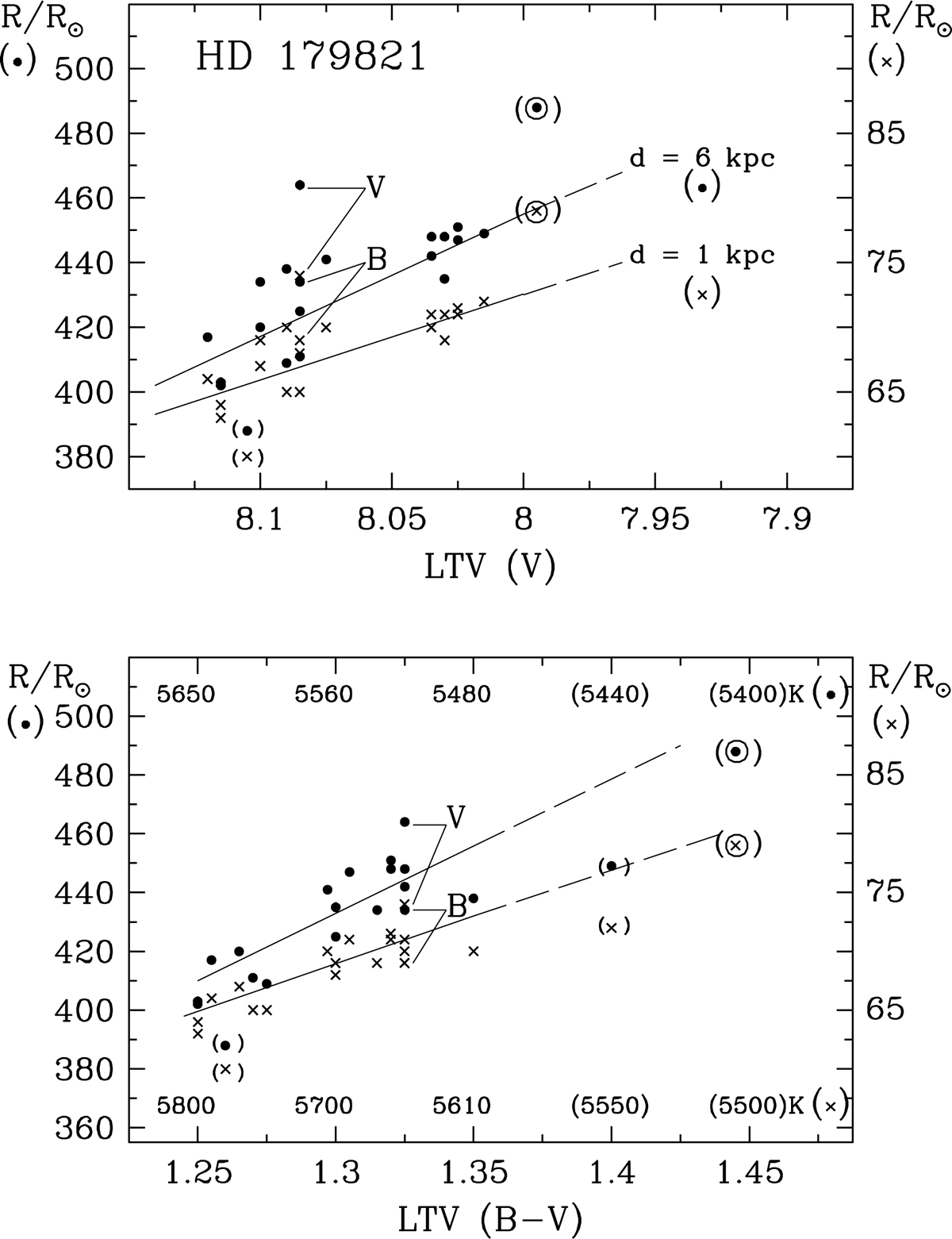Fig. 16.

Demonstration of how Teff(Phot) and R/R⊙ of the light maxima of HD 179821 depend on the brightness and colour of the blue loop evolution. The stellar parameters of photometric temperature and radius variations were calculated for two possible distances 1 kpc (x signs) and 6 kpc (dots) using the dJN method. Brackets indicate uncertain results by a lack of data points in the light curves, encircled symbols represent the pulsation maximum at JD 24 48550 of which V is very bright, but the colour indices (B − V) and especially the (U − B) extremely red. The symbols labelled V and B refer to the maximum of a very peculiar pulsation at ∼JD 24 49300, of which the BL evolution in V declined significantly sooner than in B. As most light maxima belong to a blue loop evolution (between JD 24 48000 and JD 24 53000), Figs. 9 and 10, the photometric temperatures (lower panel) increase in concert with decreasing radii, and a declining visual brightness (upper panel).
Current usage metrics show cumulative count of Article Views (full-text article views including HTML views, PDF and ePub downloads, according to the available data) and Abstracts Views on Vision4Press platform.
Data correspond to usage on the plateform after 2015. The current usage metrics is available 48-96 hours after online publication and is updated daily on week days.
Initial download of the metrics may take a while.


